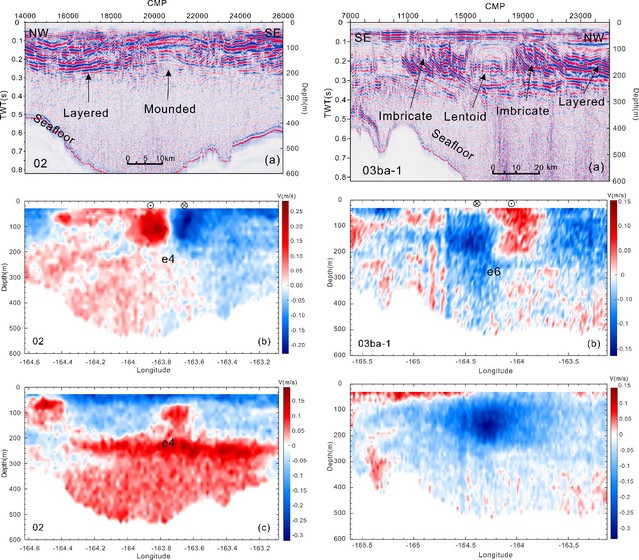Kun Zhang1, Haibin Song1,*, Bernard Coakley2, Shun Yang1, and Wenhao Fan1
1 State Key Laboratory of Marine Geology, School of Ocean and Earth Science, Tongji University, Shanghai 20092, China.
2 Geophysical Institute, University of Alaska, Fairbanks, AK 99775, USA.
Abstract
Halocline eddies transport mass and energy across the Arctic Ocean. Seismic oceanography uses multichannel seismic reflection (MCS) data to create high resolution images of the water column, revealing oceanic fine structures. In this paper, we present water column images processed from MCS data acquired during cruise MGL1112 on the Chukchi Borderlands in the western Arctic Ocean. Combined with along-track images of current velocities measured during MCS acquisition by a hull-mounted ADCP, a total of 23 mesoscale eddies were detected, of which 19 are anticyclonic, and 4 are cyclonic. They correspond to the lentoid and mounded reflections on the seismic images, respectively. These shallow eddies are constrained by the halocline and occur in regions with rugged seafloor. The geometric parameters of these eddies were estimated from the underway data collected during MGL1112. These parameters could be valuable for modeling 3D eddy structures and validating high-resolution climate projection models. Expendable Bathythermography (XBT) profiles of water temperature and sound speed versus depth were collected during this ruise. Three of the 24 XBT stations sampled eddies https://agupubs.onlinelibrary.wiley.com/doi/10.1029/2022JC018453



